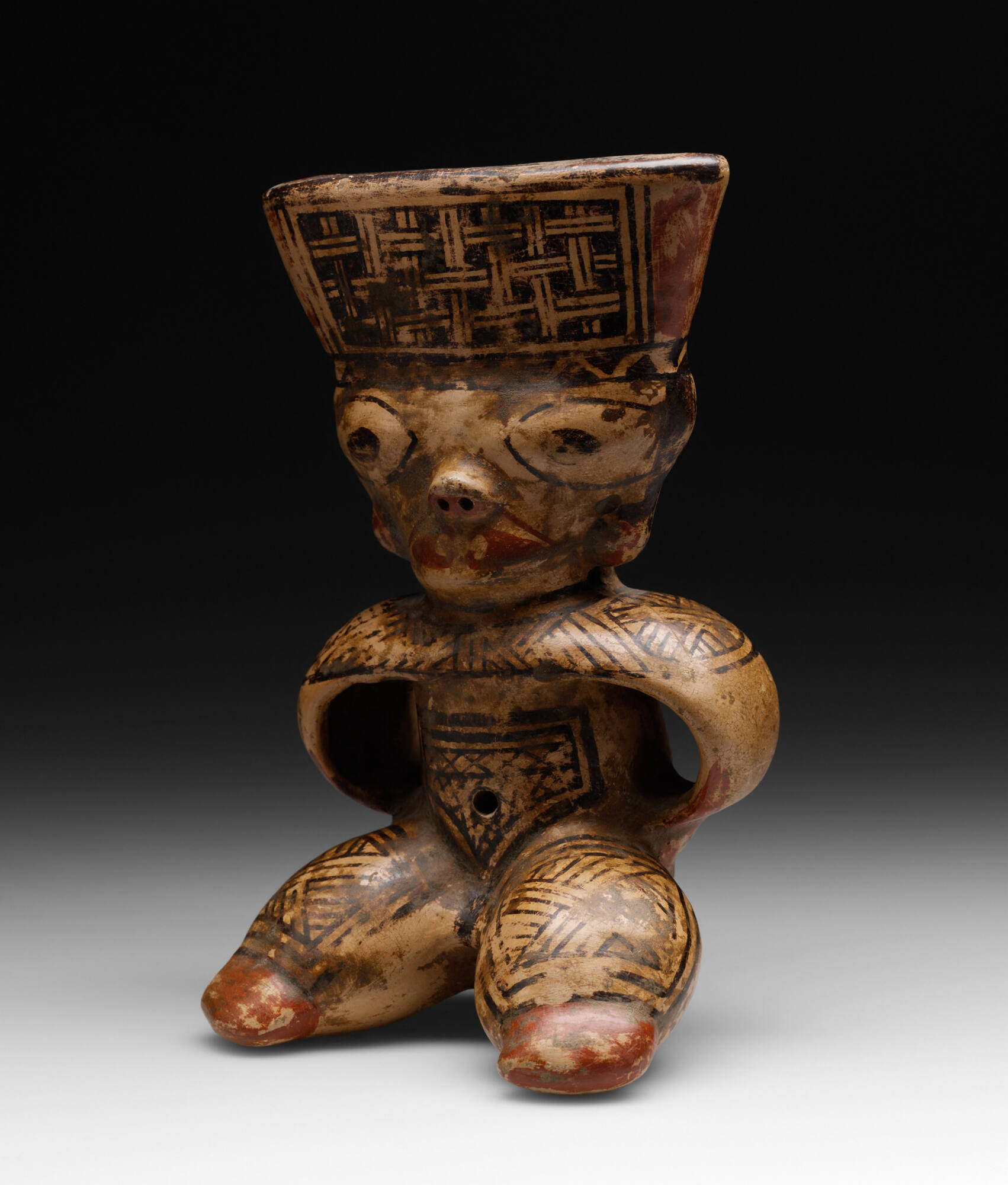Object Details
Culture
Guanacaste-Nicoya (Costa Rica)
Date
AD 800-1400
Medium
Earthenware
Dimensions
7 1/2 × 4 1/2 × 1 3/8 inches (19 × 11.4 × 3.5 cm)
Credit Line
Gift of Thomas Carroll, PhD 1951
Object
Number
2006.070.434
WHERE WAS IT MADE?This ceramic male figure was made in what is now Costa Rica.HOW WAS IT MADE?This f(…)
WHERE WAS IT MADE?This ceramic male figure was made in what is now Costa Rica.HOW WAS IT MADE?This figure was made from clay using a combination of hand-building techniques, including coiling and hand modeling. After the form was made, the surface was painted with different colors of slip. Slip paint is made by mixing different-colored clays or ground mineral pigments with water. Although some colors are naturally present in the clay, others can be made by adding powdered minerals to clay; for example, minerals high in iron produce rich oranges and reds, while those containing various forms of copper produce blues and greens. When the slip dried, the figure was burnished before being fired in an earthen pit.HOW WAS IT USED?The top of the hat of this figure has a shallow depression, suggesting it might have been used as an incense burner. In general, the original function of archaeological figurines found in museum collections is uncertain. Today archeologists carefully record information about the associations between artifacts and the circumstances of their burial as they are unearthed, and we can draw many conclusions about object function. However, very few of the archaeological objects found in museums today were excavated in a careful, scientific manner, so we have fewer clues about their past associations and function. A wide range of people and objects are shown in pre-Columbian pottery. From burials, we know that the variety of jewelry and clothing styles reflect the actual appearance of many of these prehistoric people. Because figurines represent many life stages and ordinary human activities, they likely served to exemplify the usual norms of behavior, to serve as guidelines or rules to help socialize people and integrate them into society. Although obviously decorative, figurines could also have been used to make offerings to supernatural powers, to serve as good luck charms, or to accompany the dead as grave goods.WHY DOES IT LOOK LIKE THIS?Notice the large, exaggerated head and disproportionately large eyes, and stubby legs. The figure is wearing a large hat with a painted basket-weave pattern. Notice the fine black painted lines and red accents. The forms and decoration of this figure are typical of a style known as Guabal Polychrome. To see another Guabal Polychrome figure in the Johnson Museum’s collection, search for object number 2006.070.435 in the keyword search box.ABOUT THE GUANACASTE-NICOYA CULTURE:Social changes in Guanacaste-Nicoya during the period following AD 800 may be related to increased volcanic activity, which served to concentrate the human population in coastal areas as highland-dwellers fled the ash-covered interior. Reliance on marine foods, especially as sources of protein, increased considerably. At the same time, evidence of population movements into this area from farther north in Mesoamerica, perhaps due to social unrest following the collapse of the Classic Maya civilization and the fall of Teotihuacan, greatly altered the social landscape in Costa Rica. This is reflected in the art of the period from AD 800-1200, in which the production of polychrome ceramics increased substantially and in which stylistic variation increased notably.













